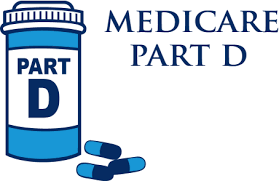
Inspire Workforce has partnered with Roundstone to assist owners of small and midsize businesses that need to think long-term when planning how to best manage healthcare insurance costs. On one hand, employers want to provide the best coverage available to their hard-working employees. On the other hand, employers also need to keep a tight rein on costs.
The volatility of the health insurance industry in the U.S. makes year-to-year benefit costs unpredictable at best, catastrophic at worst. Every year, many small businesses are forced to close their doors because of the cost of providing a competitive benefits package to their employees.
Why You Need a Long-term Strategy

Long-term strategic planning may be the only way forward for most small to midsize businesses. Following are three reasons why.
Healthcare Expenses Keep Rising
Year after year, healthcare costs soar well past the rate of inflation and workers’ earnings. There are many reasons for that, including:
- Not enough competition in the industry. The six largest insurance companies own the majority of the market. This inhibits competition and limits the options of most groups.
- Staggering insurance company profits and CEO compensation.In 2020, each of the country’s top five health insurance companies made billions in profits. The CEOs of the top eight companies made a combined total of more than $143.5 million in total compensation in 2018.
- Skyrocketing pharmacy costs. In the three years from 2016 to 2019, the cost of prescription drugs rose 36%. In 2019, the average total compensation for CEOs in the largest pharmaceutical companies averaged $7.8 million.
- Lack of data and cost transparency. It’s very difficult for consumers to get consistent pricing information from hospitals or insurance companies. For this reason, few consumers shop around for their healthcare – or even understand their medical bills. This creates a climate where insurance companies are all but immune from consumer market checks.
You Need a Good Benefits Package to Attract and Retain Top Talent
Increasingly, finding and keeping good employees is challenging for small to midsize businesses. Besides competitive pay and work environment, prospective employees also expect a strong benefits package. Providing those benefits is getting harder every year.
The average insurance premium for a family plan has gone up 55% over the past 10 years. At the same time, wages have increased only 26%. Many smaller companies don’t have the finances to assume this increasing burden themselves and are forced to shift all or a portion of these increases onto their employees.
But this option is becoming less and less tenable as increases in premiums are outstripping inflation. What’s more, many employees are bringing home less money each year as the increase in their share of their health insurance premiums grows more quickly than their earnings.
According to the Kaiser Family Foundation (KFF), employee share of their health insurance benefits has gone up 80% in the past 10 years. Not surprisingly, employees are becoming unwilling or unable to take on any more of that expense. It’s clear that the market needs a better alternative.
You Need Cost-Containment Options
In the past 40 years, healthcare spending in the U.S. has increased 6-fold, from $1,848 per capita In 1970 to $11,582 in 2019 (in constant 2019 dollars). In 2022, healthcare costs are projected to increase another 6%.
What’s more, the average premium for a covered employee in 2020 was $7,470, while family coverage averaged $21,342, according to KFF. And these rates continue to rise every year.
With traditional fully insured plans, companies can only react to annual premium increases. But for the long-term health of your business, you need to be proactive about how you spend your health benefit dollars by using data and analytics to spot inefficiencies and areas to optimize plan utilization. Cost containment and well-being programs can be used to fight rising drug costs and stop unnecessary expense from getting out of control.
Self-Funded Captive Group Insurance Is the Solution

For decades, over 90% of large corporations have used a self-funding model to manage the spiraling costs of employee health benefits, but smaller companies haven’t had the resources and scale to take advantage of the same approach.
In the past decade, a new option for health insurance is changing that reality and enabling small to midsize businesses to consider self-funding as part of their long-term financial strategies.
What Is Self-Funding?
With self funding, as the name suggests, a company pays the medical expenses of its covered employees themselves rather than relying on an insurance carrier. In this way, they avoid paying premiums to insurance companies, who make staggering profits from traditional, fully-funded insurance plans.
Large corporations realize considerable savings by paying their employees’ health claims themselves and keeping unspent premium funds at the end of the year — funds that would otherwise be profit for an insurance carrier.
So, while self-funding is not a new idea, it hasn’t been feasible for most small to midsize businesses until the introduction of Roundstone’s medical group captive in 2005.
What Is Medical Captive Insurance?
Captive insurance works by minimizing risk in a self-funded plan. With a medical captive, companies band together to form a health insurance pool to reduce the cost of their medical benefit spend.
The volume of employee health claims from year to year is unpredictable. Some years, a company will have a relatively low claims expense, and their premiums will far exceed the amount the insurance paid out in claims. The insurance company keeps the difference as profit.
Other years, a company’s health claims can be very high and often result in a premium increase the following year. Just one high claims year can devastate a small company.
Either way, the company loses.
However, when those companies join together to form a captive group, the risk of a bad claims year is spread over a larger pool, resulting in less volatility and lower healthcare expenses for all members of the group.
Medical captive insurance plans offer several ways that small companies can control where and how most of their employees’ premium funds are spent:
Cost savings. As members of the captive, small to midsize businesses keep their unspent premium funds. If they have a high claims year, they are protected by the performance of the pool and still receive money back from unspent captive premium. What’s more, because they’re not at the mercy of a traditional fully insured carrier, they don’t receive an outrageous premium increase if they do have one bad year.
Low fixed rates. With fully insured plans, 100% of your premium cost is fixed. That means that you have no control over how your premium dollars are spent. The insurance company does what it wants to pay for and keeps 100% of the profits in years that your claims cost less than you paid in premium.
With captive groups, however, fixed rates are typically 15%. The increased variable spend gives you more opportunities to save money, and you’ll keep any remaining funds in your claims bank account at the end of the plan year.
Flexibility. Roundstone’s captive members are able to choose their own third-party administrator (TPA) and pharmacy benefits manager (PBM). More importantly, they are able to decide for themselves how to spend their premium funds, allowing them to initiate cost-containment strategies to improve their employees’ health and wellbeing while lowering healthcare expenses.
Why Include Roundstone in Your Long-Term Strategy?

Roundstone offers many advantages over other captive programs. These advantages include:
Experience. Roundstone, as the original group medical captive, has been managing group captives for over a decade. We know how to underwrite risk effectively and advise businesses like yours on how to make the most of cost-containment options.
Freedom of choice. We work with you to design a custom plan that meets your specific goals. You have the option to choose your TPA and PBM. You also get to decide on incentives and cost-containment measures that make sense for your workers.
Data transparency. As a member of a Roundstone group captive, you will benefit from our commitment to full disclosure of information. You will have access to all of your claims data with our CSI Dashboard so you can see exactly how your healthcare funding is being spent and if your plan is being utilized as expected.
In addition, our data experts will help you to proactively analyze and interpret this data to identify cost-containment opportunities.
Guaranteed cost savings. On average, Roundstone captive members save 20% per year in health insurance costs. We guarantee that you will save money overall in the first four years (or we’ll make up the difference). Two-thirds of our clients will even save enough money over those initial four years to fully fund their fifth year of claims.
Premium reimbursement. Our premium reimbursement program sets us apart from other captive group managers by providing a second source of savings to our members. In our layered approach to funding your plan, a percentage of your premiums is put into the captive’s pooled funds to cover claims as a group (over a pre-determined level), and a percentage is set aside for stop loss coverage, which covers high-cost claims.
At the end of each claim year, money left over in the group’s pooled premium fund is returned to our members via a distribution check delivered by your advisor. Your distribution is paid out on a pro rata basis.
Personal service. At Roundstone, we are focused on building relationships with our members. We are committed to helping you create a plan that meets the specific needs of your company and your employees. And we’ll take the time to be sure you understand exactly what you’re buying and why.
The Future of Small Business Health Insurance
With the volatility of the American insurance industry, long-term strategizing is more important than ever for small and midsize businesses. With each new year bringing higher premiums, self-funding as part of a medical group captive is an increasingly attractive option for many companies. For some, it’s become a necessity.
With Roundstone’s medical captive insurance plans, your company can self-fund and save money the same way large corporations do. And with our commitment to cost savings, flexibility, and service to our clients, nobody does medical captive groups better than Roundstone.
For More Information
For more about why Roundstone is the best choice for your company’s long-term financial strategy, contact us today.
Request a Proposal
To begin the conversation about providing your company with the benefits of captive group health insurance, request a proposal and benchmark review today. We’re happy to discuss your options so your company can start saving right away on the rising costs of healthcare.
Content Provided by Roundstone.




